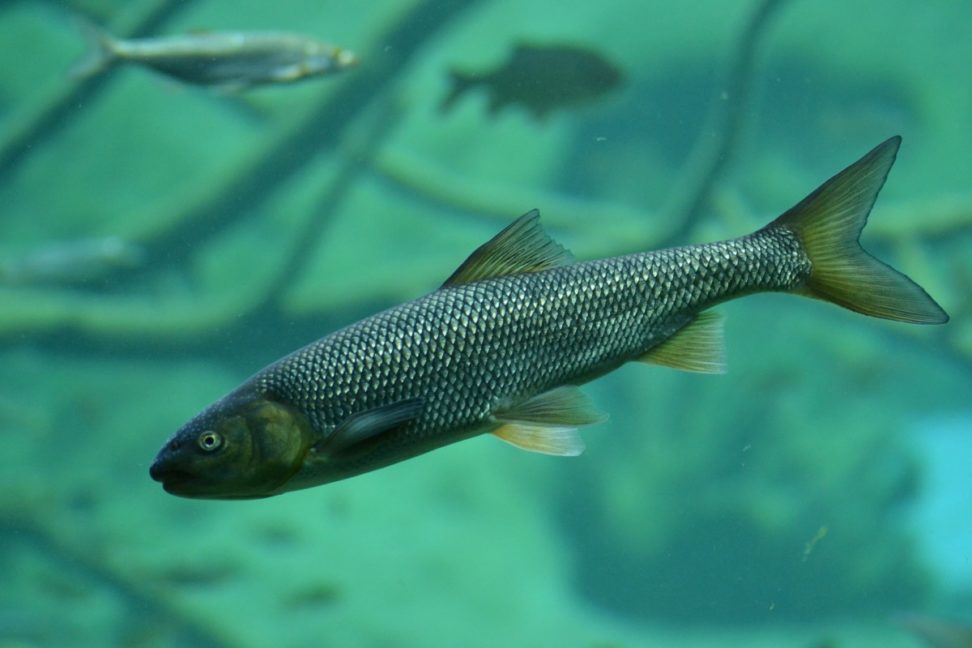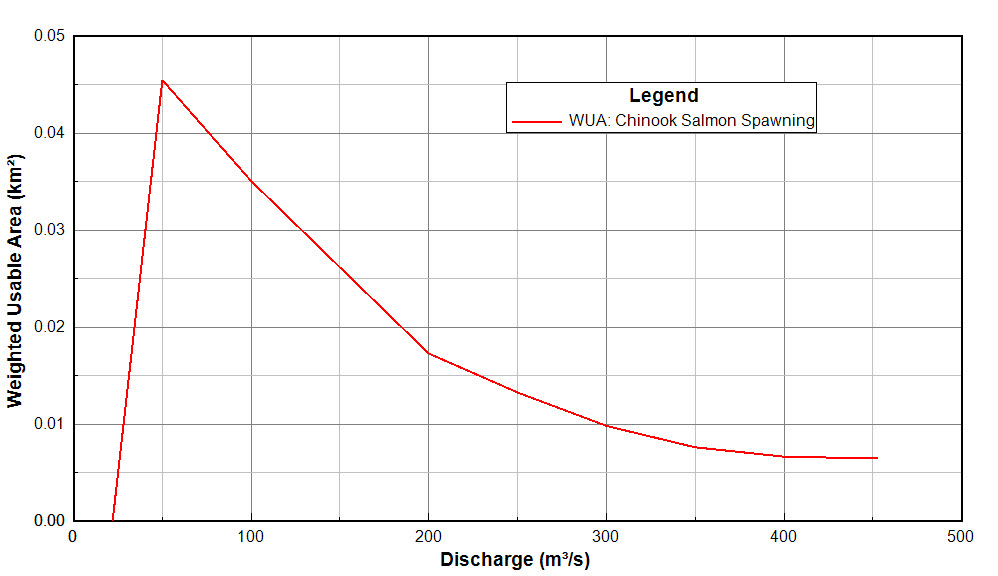Specialized Post-processing Tools
EFDC_Explorer (EE) provides a number of specialized tools to help you post-process the output from the model. These include tools to quantify the habitat for fish and other aquatic organisms, as well as forced evaporation tools to quantify the impact of heated receiving water on evaporation.
Habitat Analysis with Critical Limits Time Series
Habitat models are designed for a wide variety of planning applications where habitat information is an important consideration in the decision-making process. EEMS now supports a critical-limits times series habitat analysis. You now have the option to define up to five different parameters for the critical limits, selected from any parameter that is currently activated in EE. The time series plots present a composite time series of velocity and the volume and area that meet the criteria.
Habitat Suitability Analysis with Instream Flow Incremental Method
Instream Flow Incremental Method (IFIM) models provide an objective, quantifiable method of assessing the existing habitat conditions for a given aquatic species within a study area by measuring how well each habitat variable meets the habitat requirements of the species by life stage. IFIM is one of the world’s most widely used instruments for assessing the effect of flow manipulation on river habitats. The U.S. Environmental Protection Agency (EPA) describes IFIM as a state-of-the-art tool. A major component of IFIM is a collection of computer models called the Physical Habitat Simulation Model (PHABSIM), which incorporates hydrology, stream morphology, and microhabitat preferences to determine relations between streamflow and habitat availability. With EE’s specialized post-processing tools, EEMS now serves as a highly advanced 3D PHABSIM.
Forced Evaporation
Forced evaporation is defined as the additional evaporation in receiving waters attributable to increased temperatures from the discharge of heated cooling water. Federal and state agencies currently consider forced evaporation to be a consumptive use for thermal electric power plants. EE now provides you a toolbox to provide spatial and temporal evaluations of forced evaporation.


